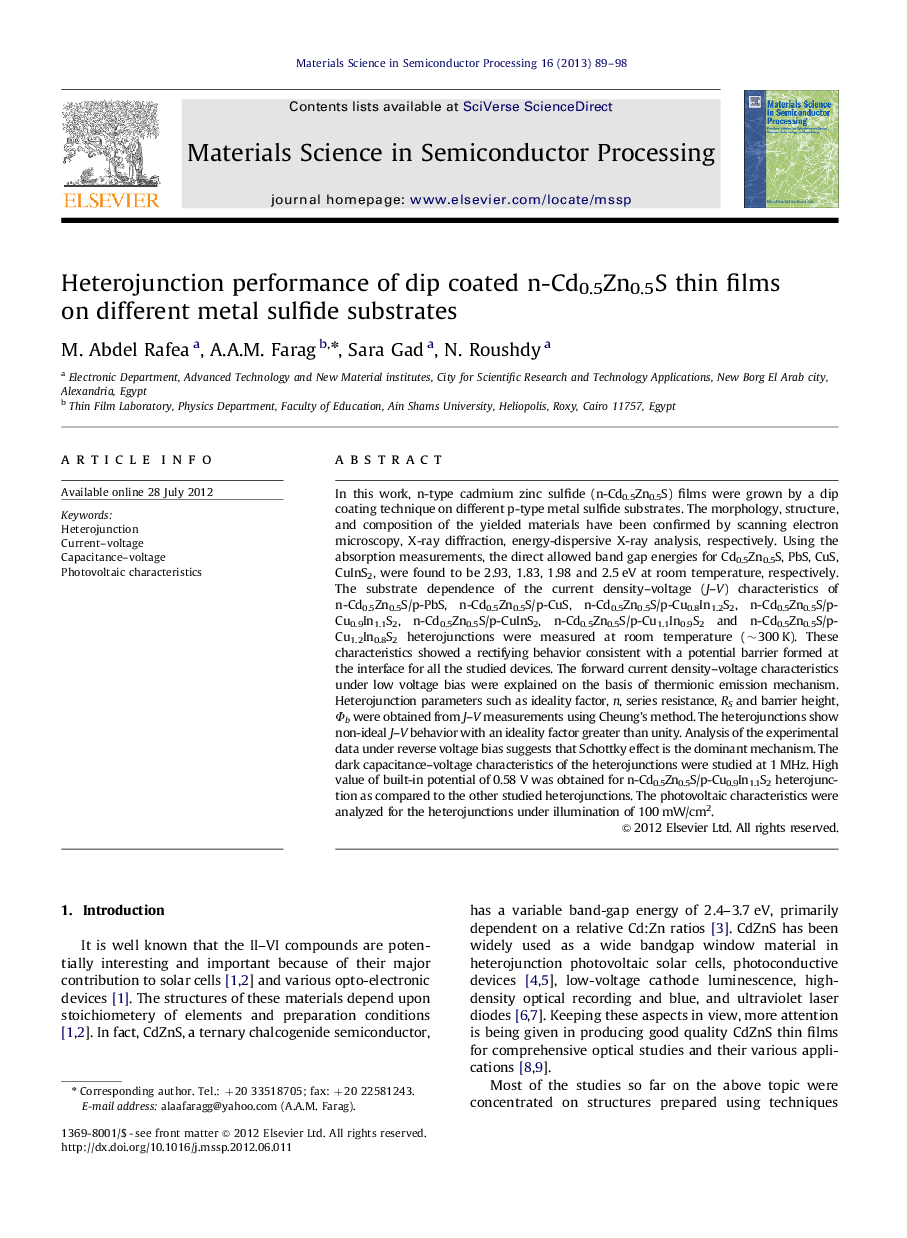| Article ID | Journal | Published Year | Pages | File Type |
|---|---|---|---|---|
| 728366 | Materials Science in Semiconductor Processing | 2013 | 10 Pages |
In this work, n-type cadmium zinc sulfide (n-Cd0.5Zn0.5S) films were grown by a dip coating technique on different p-type metal sulfide substrates. The morphology, structure, and composition of the yielded materials have been confirmed by scanning electron microscopy, X-ray diffraction, energy-dispersive X-ray analysis, respectively. Using the absorption measurements, the direct allowed band gap energies for Cd0.5Zn0.5S, PbS, CuS, CuInS2, were found to be 2.93, 1.83, 1.98 and 2.5 eV at room temperature, respectively. The substrate dependence of the current density–voltage (J–V) characteristics of n-Cd0.5Zn0.5S/p-PbS, n-Cd0.5Zn0.5S/p-CuS, n-Cd0.5Zn0.5S/p-Cu0.8In1.2S2, n-Cd0.5Zn0.5S/p-Cu0.9In1.1S2, n-Cd0.5Zn0.5S/p-CuInS2, n-Cd0.5Zn0.5S/p-Cu1.1In0.9S2 and n-Cd0.5Zn0.5S/p-Cu1.2In0.8S2 heterojunctions were measured at room temperature (∼300 K). These characteristics showed a rectifying behavior consistent with a potential barrier formed at the interface for all the studied devices. The forward current density–voltage characteristics under low voltage bias were explained on the basis of thermionic emission mechanism. Heterojunction parameters such as ideality factor, n, series resistance, RS and barrier height, Φb were obtained from J–V measurements using Cheung's method. The heterojunctions show non-ideal J–V behavior with an ideality factor greater than unity. Analysis of the experimental data under reverse voltage bias suggests that Schottky effect is the dominant mechanism. The dark capacitance–voltage characteristics of the heterojunctions were studied at 1 MHz. High value of built-in potential of 0.58 V was obtained for n-Cd0.5Zn0.5S/p-Cu0.9In1.1S2 heterojunction as compared to the other studied heterojunctions. The photovoltaic characteristics were analyzed for the heterojunctions under illumination of 100 mW/cm2.
